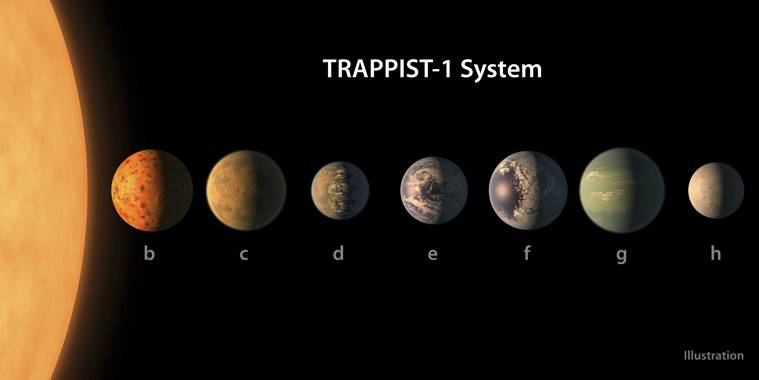The astronomers of the NASA, for the first time ever, have discovered seven Earth-size exoplanets orbiting a nearby star on Wednesday.
As per the NASA and Belgian-led research team who announced the discovery Wednesday that these planets are less than 40 light-years away in the constellation Aquarius.
These planets circle around a dim dwarf star called Trappist-1. The size of Trappist-1 barely similar the size of Jupiter. Three planets are in the so-called habitable zone, where liquid water and, possibly life, might exist. The others are right on the doorstep.
The NASA Scientists said that they need more time to study the atmospheres of these exoplanets before determining whether these rocky, terrestrial planets could support some sort of life.
The co-author – Emmanuel Jehin of the University of Liege said that there are 200 billion stars in our galaxy. So do an account. You multiply this by 10, and you have the number of Earth-size planets in the galaxy – which is a lot.
If Trappist-1 were our sun, all seven planets would be inside the orbit of the Mercury planet. Mercury is the innermost planet of our own solar system.
The researchers speculate that the ultra-cool star at the heart of this system would shine 200 times dimmer than our sun. And the star would glow red – maybe salmon-colored.
In a teleconference with media on Tuesday, Triaud said that the spectacle would be beautiful because when you would see another planet, maybe about as big as two times of the moon in the sky.
Tiny, cold stars like Trappist-1 were long shunned by exoplanet-hunters. But the Belgian astronomers decided to seek them out and building a telescope in Chile to observe 60 of the closest ultracool dwarf stars. Their Trappist telescope lent its name to this star.
The Trappist-1 star is close by cosmic standards, allowing astronomers to study the atmospheres of its seven temperate planets. All seven look to be solid like Earth – mostly rocky and possibly icy, too.
Triaud said that if life managed to thrive and releases gases similar to that that we have on Earth, then we will know.
Gillon noted that chemical analyses should indicate life with perhaps 99% confidence. But he added that we will never be completely sure without going there.

Leave a Reply